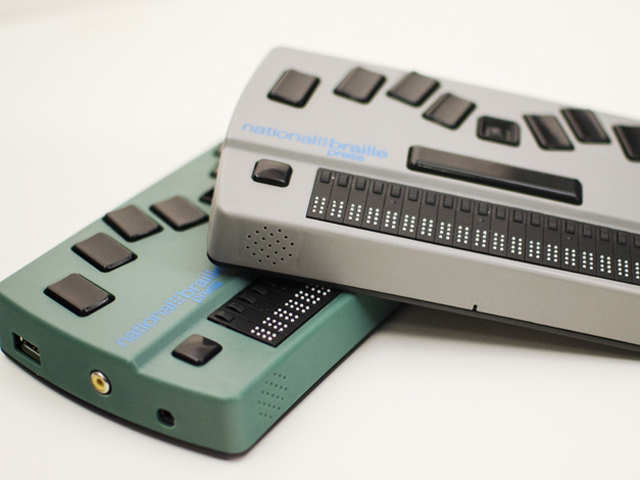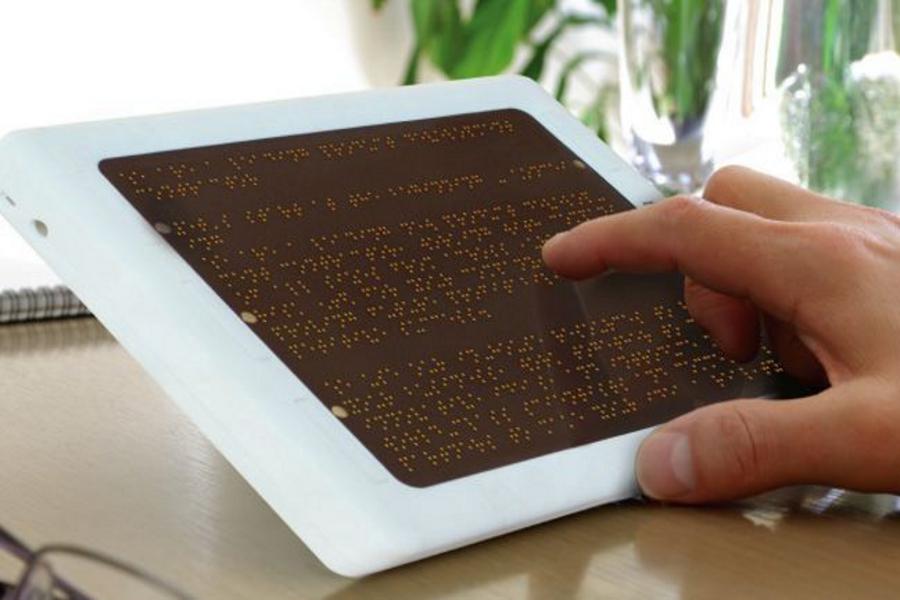Screen Readers for the Blind: Accessing Data Without Barriers
Screen Readers for the Blind: Accessing Data Without Barriers
Blog Article
An Overview to Life-Changing Assistive Innovation for the Blind and Visually Impaired
The innovation of assistive technology has actually ushered in a transformative era for people that are visually impaired or blind, offering devices that improve freedom and enhance day-to-day experiences. Developments such as wise navigating devices and AI-driven applications are redefining how individuals connect with their environments, while obtainable analysis solutions and wise home modern technologies guarantee to further raise the high quality of life.
Smart Navigation Devices
Smart navigating devices are revolutionizing the method people that are aesthetically impaired or blind connect with their setting. These sophisticated technologies, which incorporate general practitioners, audio feedback, and haptic signals, supply customers with essential information about their surroundings, boosting their independence and wheelchair.
One prominent instance is the use of clever walking sticks geared up with sensors that identify obstacles and supply real-time responses via vibrations or audio hints. These devices enable customers to browse intricate environments, such as busy roads or crowded public areas, with raised confidence. Additionally, wearable tools, such as clever glasses, are being created to assist in acknowledging faces, reading text, and identifying objects, better enhancing the individual's spatial awareness.
Additionally, smart navigating devices are progressively incorporating artificial intelligence to evaluate information and adapt to customers' choices. This personalized method not only boosts navigation efficiency but likewise fosters a sense of empowerment among users. As modern technology remains to development, the potential for smart navigating tools to produce an extra comprehensive and easily accessible globe for individuals that are blind or visually damaged continues to be promising, inevitably improving their daily experiences and interactions.
Cutting-edge Mobile Applications
Mobile applications are emerging as effective tools for assisting people that are blind or aesthetically damaged, providing a variety of capabilities that enhance daily living. These apps harness progressed modern technology to assist in everyday jobs, boost ease of access, and advertise independence.
One category of cutting-edge mobile apps concentrates on aesthetic recognition. Applications like Be My Eyes attach individuals with sighted volunteers using video clip phone calls, enabling real-time help for tasks such as reviewing labels or navigating unfamiliar atmospheres. Apps like Seeing AI utilize artificial intelligence to describe surroundings, checked out text, and identify objects, supplying customers with critical details at their fingertips.
Another substantial location is navigating and orientation. Apps such as Aira and Nearby Traveler provide audio advice, aiding individuals browse city areas with ease. They use individualized support, enabling for a more confident expedition of the atmosphere.
Additionally, health and wellness and health applications deal with specific demands, such as drug management and physical fitness monitoring. These applications aim to foster an all natural strategy to well-being, making certain that customers can maintain their health and wellness separately.
Wearable Assistive Tools
Wearable assistive gadgets stand for a considerable innovation in modern technology created to support people who are blind or aesthetically impaired. These tools boost wheelchair and self-reliance by giving real-time responses concerning the surrounding setting. Among the most notable wearable modern technologies are smart glasses outfitted with cams and sensors, which can identify challenges and relay important info with audio cues.

One more innovative alternative includes wrist-worn tools that use ultrasonic waves to spot barriers and provide navigational help. These tools often come with personalized settings, enabling individuals to customize the signals to their details needs.
The integration of expert system in wearable assistive modern technology is likewise notable, as it continually improves the precision and responsiveness of these devices. In general, wearable assistive tools are changing the lives of the visually damaged and blind, fostering greater autonomy and improving quality of life through ingenious solutions.
Available Reviewing Solutions
Obtainable analysis options play a vital role in allowing individuals who glasses with magnetic frames are blind or visually damaged to engage with message throughout numerous formats. These services encompass a variety of devices and modern technologies developed to enhance reading experiences, from conventional print materials to digital content.
One popular solution is Optical Character Recognition (OCR) innovation, which transforms printed message into digital layout, permitting users to pay attention to or review the material utilizing display visitors. Additionally, specialized e-readers furnished with text-to-speech abilities offer adjustable analysis experiences, allowing users to adjust font sizes and background colors for improved visibility.
One more effective method is braille displays, which offer tactile comments by converting electronic text right into braille. This allows people to review with touch, fostering better independence and access to literature. Mobile applications developed for reviewing checked publications or papers can empower users with immediate accessibility to a large collection of materials (Assistive technology for the blind).

Smart Home Technologies
Smart home innovations have actually changed the method individuals who are blind or aesthetically impaired connect with their living atmospheres, enhancing both self-reliance and security. These cutting-edge options take advantage of automation and connectivity to produce an accessible home customized to the needs of users.
Smart speakers and voice-activated aides offer hands-free control over different devices, permitting users to readjust temperature level, safety, and lights procedures through basic voice commands. This performance reduces dependence on sighted aid and cultivates a sense of autonomy. Furthermore, smart illumination systems can be customized to supply acoustic feedback or tactile cues, enabling people to navigate their homes a lot more effectively.
Additionally, security systems furnished with clever cams and sensors can send out real-time informs to individuals, improving personal safety and security without demanding visual verification. Automated door locks supply comfort, permitting individuals to safeguard their homes easily.
Incorporating clever home modern technologies not just improves day-to-day living but additionally urges social interaction through attached tools - Screen readers for the blind. With continuous innovations in assistive modern technology, the future appears promising, as even more options will emerge to additional equip people who are blind or aesthetically damaged, guaranteeing a much more inclusive and independent way of living
Conclusion
In conclusion, the improvements in assistive innovation for the visually impaired and blind represent a substantial leap toward improving freedom and lifestyle. Smart navigating tools, ingenious mobile applications, wearable tools, accessible reading remedies, and smart home technologies collectively promote a comprehensive environment. This combination of innovation not only improves mobility and day-to-day living however additionally equips individuals to engage totally with their surroundings, advertising higher freedom and engagement in culture.
Technologies such as wise navigation devices he has a good point and AI-driven applications are redefining just how users connect with their surroundings, while obtainable reading services and clever home technologies assure to further boost the quality of life. As technology proceeds to advancement, the possibility for clever navigating tools to produce a more comprehensive and obtainable globe for people that are blind or visually damaged stays encouraging, ultimately reshaping their daily experiences and interactions.
Wearable assistive tools represent a substantial improvement in modern technology made to support people that are blind or aesthetically click now damaged. Amongst the most significant wearable innovations are smart glasses furnished with sensing units and cams, which can determine challenges and relay crucial details through audio hints.
Smart navigating devices, ingenious mobile applications, wearable devices, available reading remedies, and wise home technologies jointly cultivate an inclusive environment.
Report this page